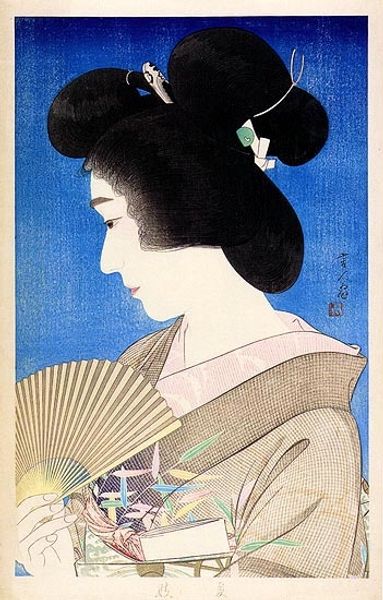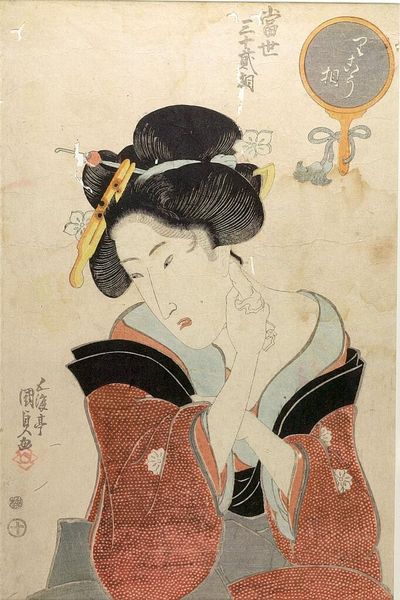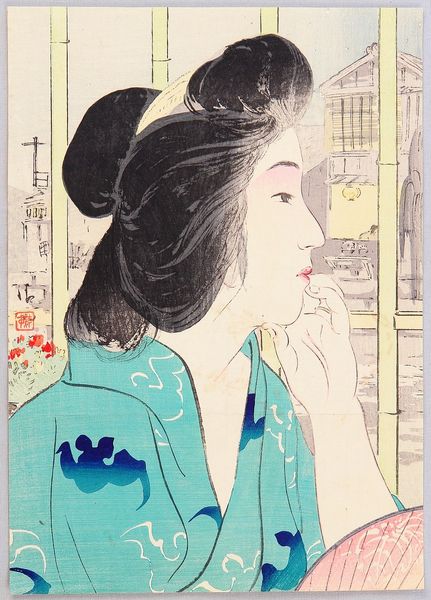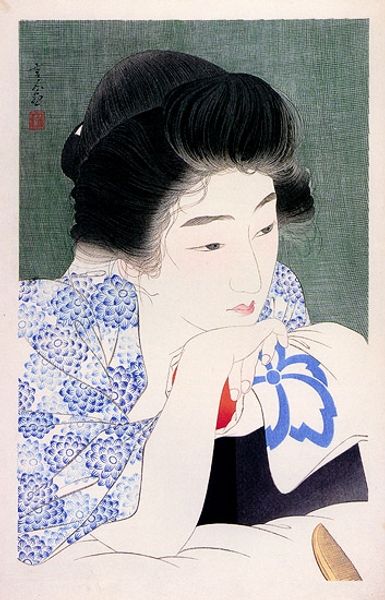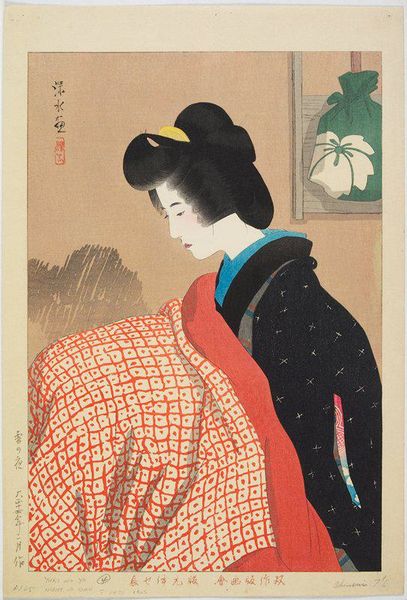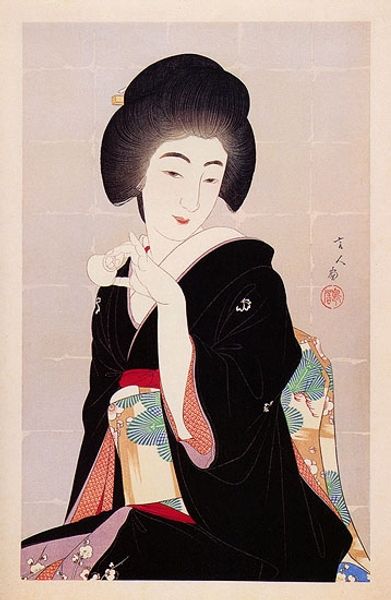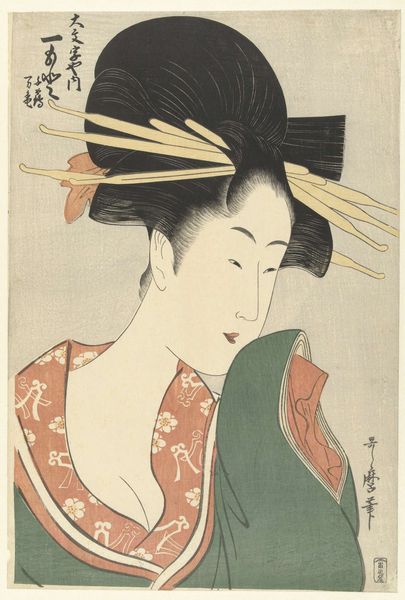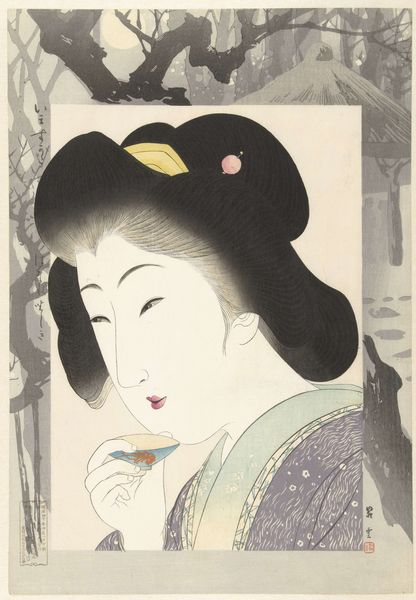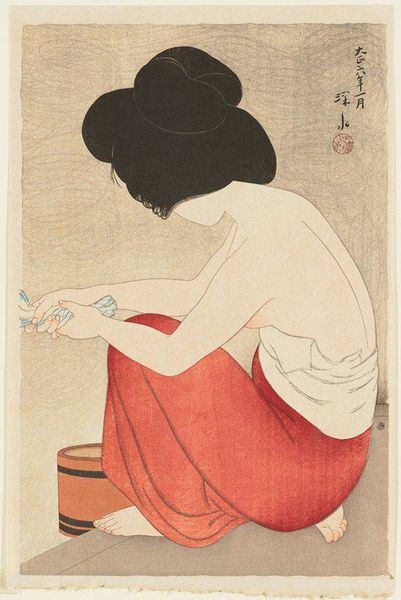
Copyright: Torii Kotondo,Fair Use
Editor: This woodblock print, "Rouge," created in 1933 by Torii Kotondo, is striking! It portrays a woman applying makeup. The contrast between the detailed hair and the soft background is captivating. What stands out to you? Curator: It's the materiality of "Rouge" that I find compelling. The ukiyo-e tradition, here revived in the *shin-hanga* movement, necessitates a deep consideration of process. Think of the labor: the carving of the woodblocks, the layering of inks, the physical act of printing. Each stage influences the final image. The "rouge," for instance, is more than just a cosmetic; it's pigment, ground and mixed, then transferred to the wood, then to paper, and finally to the skin of the subject. Editor: That's fascinating. I hadn’t considered the layers of labor involved in creating a seemingly simple image. Does the use of the woodcut medium influence our interpretation of the subject? Curator: Absolutely. This isn't painting, where the artist's hand is directly visible in the brushstrokes. Woodcut demands a different kind of authorship. It's collaborative, involving the carver, printer, publisher, and of course, the artist. "Rouge" becomes an artifact of that social and material process. How might the consumption of such prints differ from, say, oil paintings in the West at the time? Consider where and how these would be displayed, used, and circulated. Editor: I see! This print isn't just a pretty picture; it's a product of specific material conditions and labor practices, revealing social context. Curator: Precisely. Looking at it through a material lens encourages us to question the art's origins and circulation. Editor: Thanks. This helps me consider art production beyond the artist and to appreciate other contributions.
Comments
No comments
Be the first to comment and join the conversation on the ultimate creative platform.
